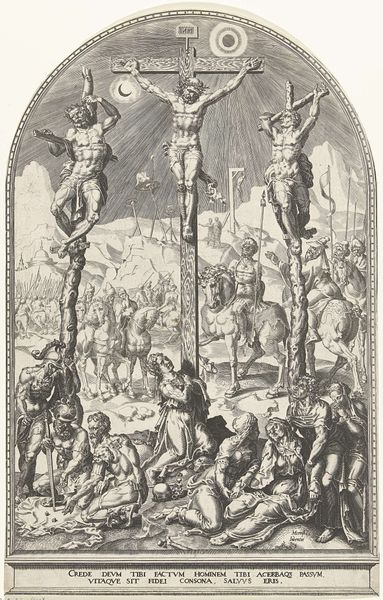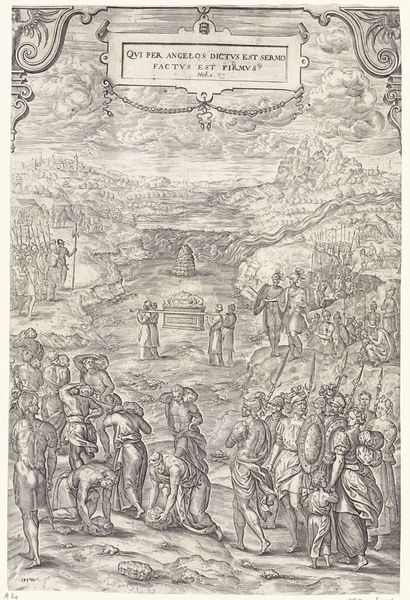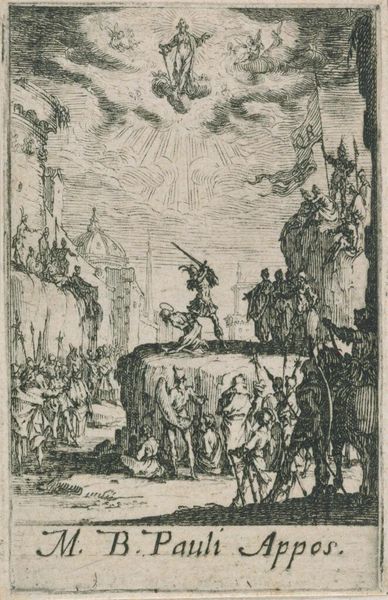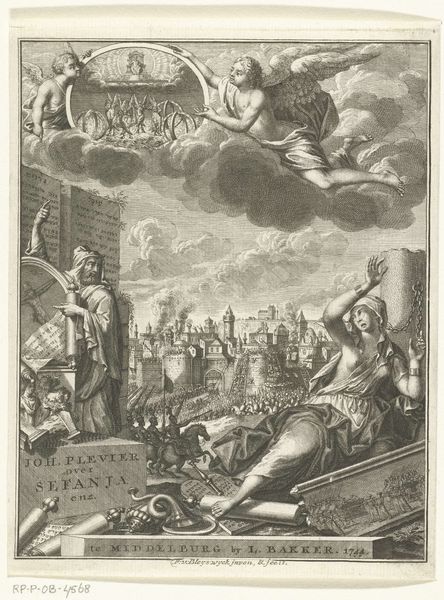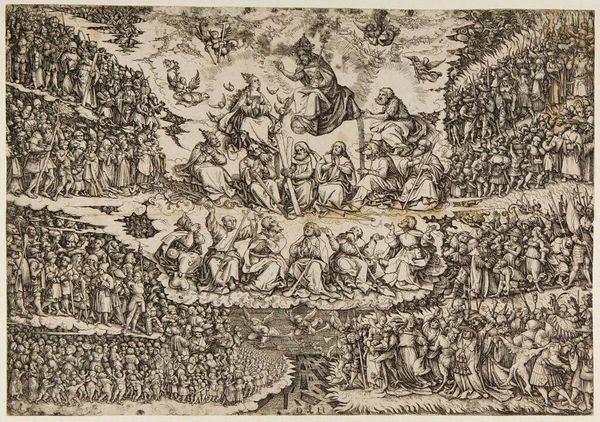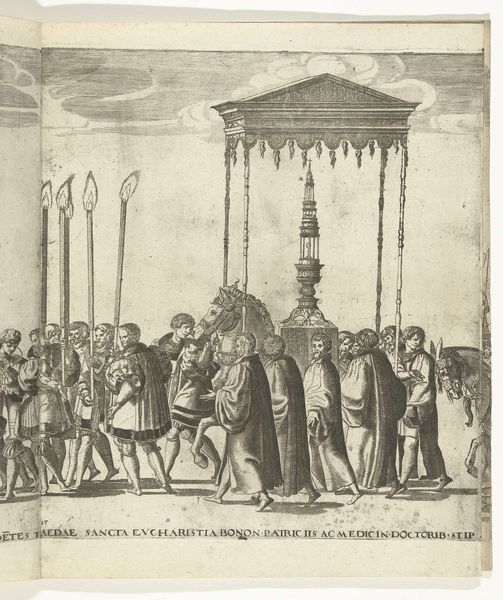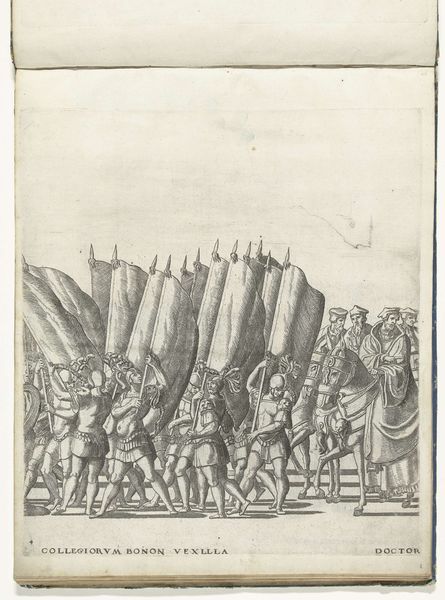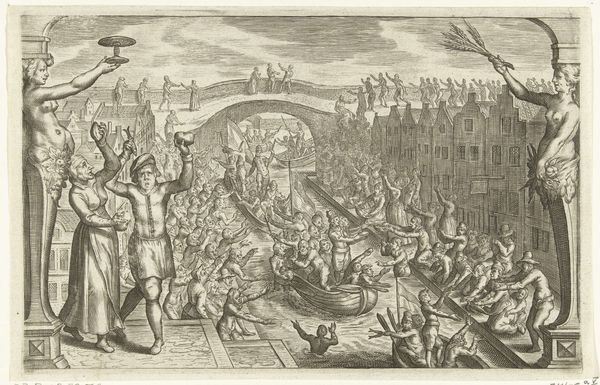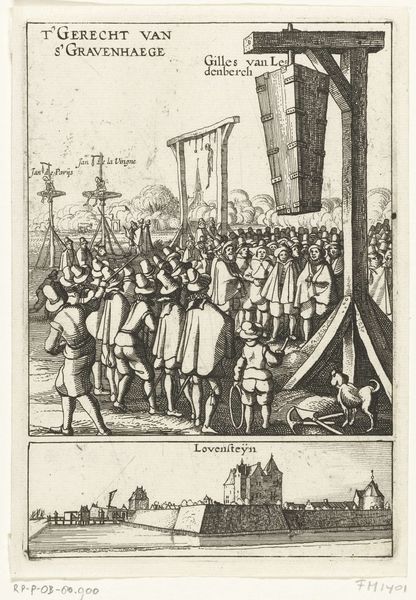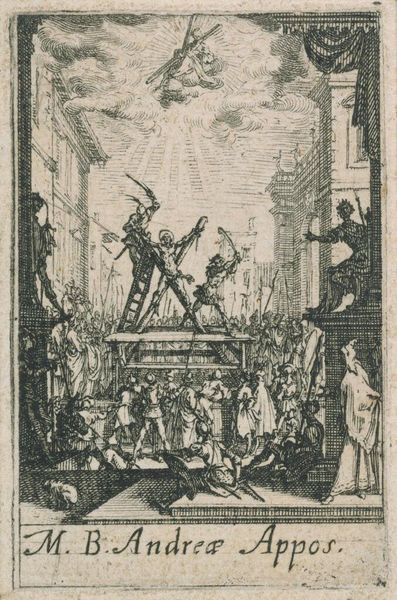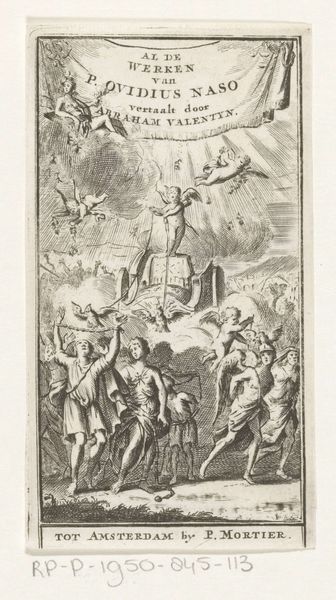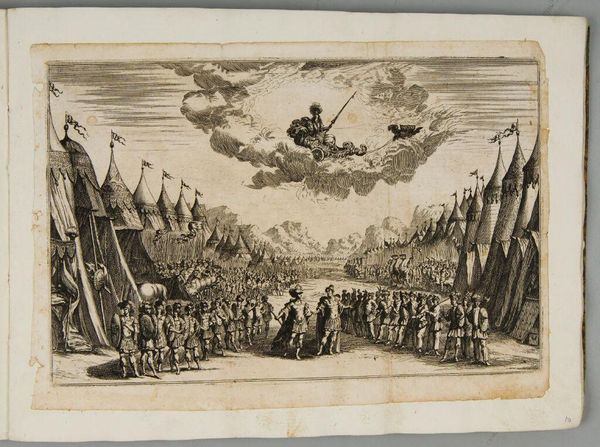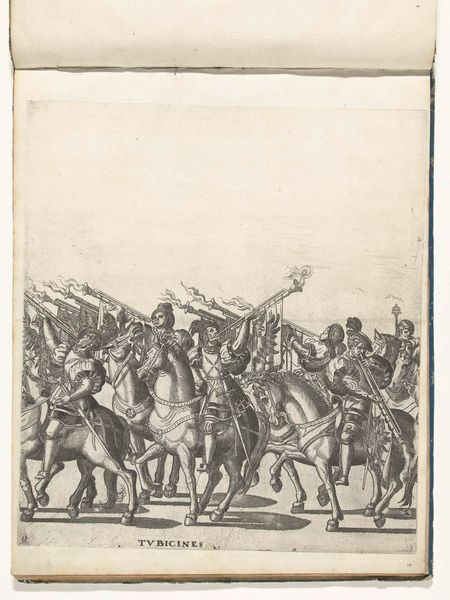
Dimensions: 16.8 x 11.3 cm (6 5/8 x 4 7/16 in.)
Copyright: CC0 1.0
Curator: Immediately, I'm struck by the sheer volume of figures in this tiny space. It feels almost claustrophobic, yet there's also a strange ethereal quality to it. Editor: Indeed, it's a complex image! This is Jacques Callot's "Martyrs of Japan," an etching, now held in the Harvard Art Museums. Callot, who lived from 1592 to 1635, never actually visited Japan. Instead, he relied on second-hand accounts and imagery to depict the crucifixion of twenty-three Franciscan friars and others. Curator: Knowing that Callot never saw Japan adds another layer. Is this then a stage set, a theatrical rendering of martyrdom based on hearsay? The angels floating above feel almost like stage props. Editor: That's a very astute observation. The image exists within a larger socio-political context. European audiences were fascinated and horrified by tales of religious persecution in faraway lands, and artists like Callot were responding to this public interest. Curator: The level of detail is astonishing. It's like looking through a keyhole into another world, both beautiful and terrifying. Editor: Absolutely, and thinking about the visual rhetoric employed here provides insight into the European perception of these events.
Comments
No comments
Be the first to comment and join the conversation on the ultimate creative platform.
